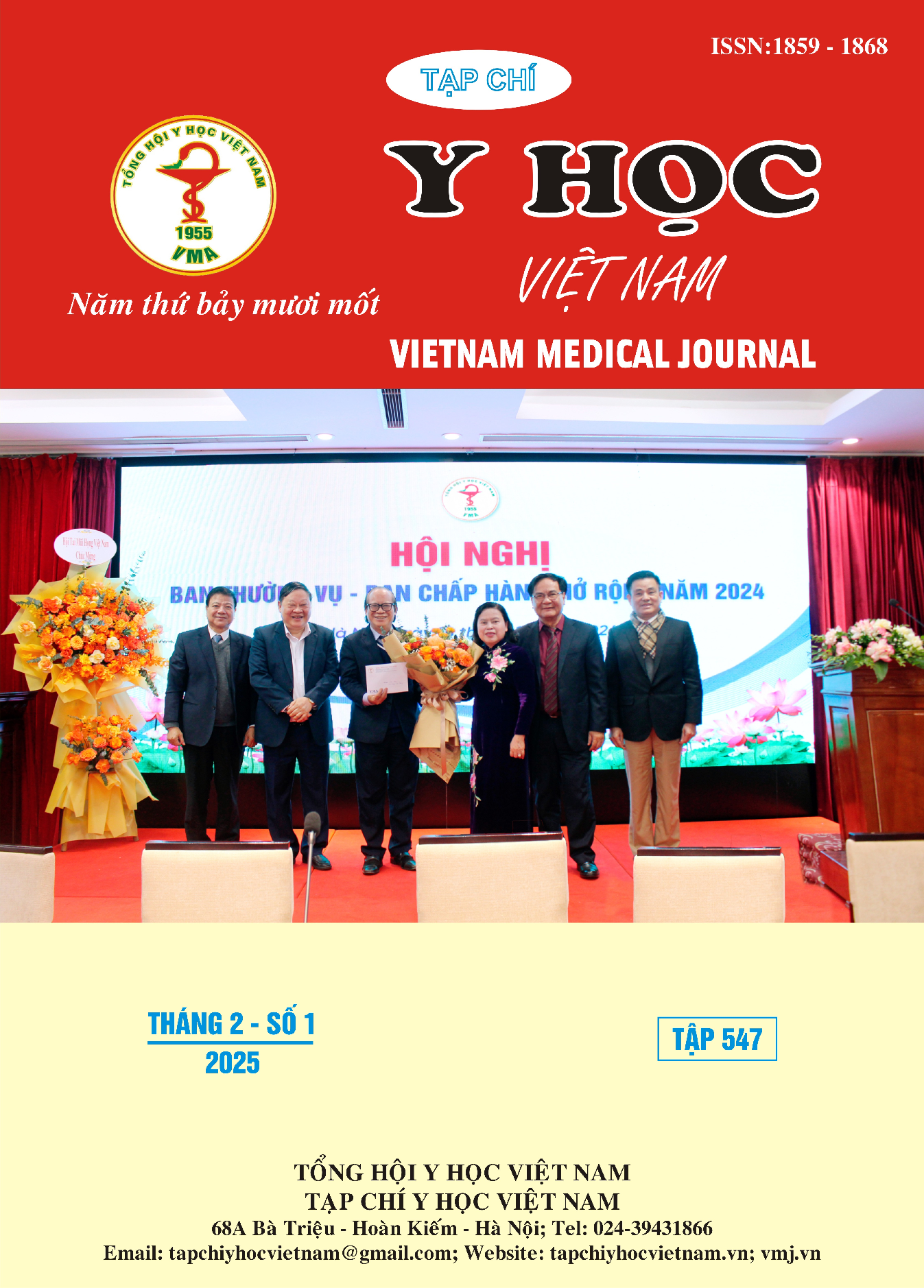CLINICAL AND PARACLINICAL FEATURES OF PATIENTS UNDER 18 WITH PERIPHERAL VASCULAR MALFORMATIONS
Main Article Content
Abstract
Objective: To describe the clinical and paraclinical characteristics of patients who under 18 years old with peripheral vascular malformations. Methods: This is case series study conducting from July 31, 2020, to June 30, 2021, at the Department of Thoracic and Vascular Surgery, University Medical Center Ho Chi Minh City. All patients diagnosed and treated for isolated peripheral vascular malformations meeting the inclusion criteria were enrolled. Results: A total of 62 patients met the study criteria, of which 46.8% were male and 53.2% were female. The average age was 11.0 ± 4.5 years, with the youngest being 3 years old and the oldest 17 years old. Clinical symptoms: Pain was observed in 100%, psychological impact in 98.4%, swelling or increased size in 95.2%, and skin discoloration in 80.6%. Physical symptoms: Thrill and bleeding occurred in 6.5%, tissue ulceration and limb ischemia in 4.8%, and bruits in 3.2%. Lesion locations: The head and neck region accounted for 45.2% of cases, while the lower extremities accounted for 35.5%. Skin temperature over the lesion site was normal in 83.9% of cases. Ultrasound findings: Venous malformations were detected in 90.3%, and arteriovenous malformations in 9.7%. MRI findings: The mean diameter of the lesion area was 7.6 ± 9.5 cm, with an average lesion volume of 58.9 ± 133.5 ml. Well-defined lesion borders were observed in 72.6%. Skin and subcutaneous tissue involvement was seen in 98.4%, and muscle involvement in 74.2%. Classification: Based on Puig’s venous malformation classification, Type II was the most common (66.1%). According to Yakes’ arteriovenous malformation classification, Type IIIa predominated (66.7%). Conclusion: Common clinical symptoms included pain at the lesion site and psychological impact. Thrill and bleeding were notable physical findings. The most frequent lesion locations were the head and neck regions. Skin temperature over the lesion site was typically normal, and most lesion sizes were under 5 cm. MRI findings often showed well-defined lesion borders, primarily involving the skin, subcutaneous tissue, and muscles.
Article Details
Keywords
peripheral vascular malformation, venous malformation, arteriovenous malformation, clinical, paraclinical.
References
2. Penington Anthony, Phillips Roderic J., Sleebs Nerida, Halliday Jane: Estimate of the Prevalence of Vascular Malformations. Journal of Vascular Anomalies. 2023, 4. 10.1097/jova. 0000000000000068
3. Lee Byung-Boong, Bergan John J.: Advanced Management of Congenital Vascular Malformations: A Multidisciplinary Approach. Cardiovascular Surgery. 2002, 10:523-533. 10. 1177/096721090201000601
4. Yun W. S., Kim Y. W., Lee K. B., et al.: Predictors of response to percutaneous ethanol sclerotherapy (PES) in patients with venous malformations: analysis of patient self-assessment and imaging. J Vasc Surg. 2009, 50:581-589, 589 e581. 10.1016/j.jvs.2009.03.058
5. Nguyễn Công Minh: Đánh giá điều trị dị dạng mạch máu bẩm sinh ở người lớn trong 6 năm (2005‐2010). Tạp chí Y học Thành phố Hồ Chí Minh. 2013, 17:53-60.
6. Enjolras O., Ciabrini D., Mazoyer E., Laurian C., Herbreteau D.: Extensive pure venous malformations in the upper or lower limb: a review of 27 cases. J Am Acad Dermatol. 1997, 36:219-225. 10.1016/s0190-9622(97)70284-6
7. Li H. B., Zhang J., Li X. M., et al.: Clinical efficacy of absolute ethanol combined with n-butyl cyanoacrylate sclerotherapy in the treatment of Puig's classified advanced venous malformation in children. Exp Ther Med. 2019, 17:1276-1281. 10.3892/etm.2018.7051
8. Soulez G., Gilbert Md Frcpc P., Giroux Md Frcpc M. F., Racicot Md Frcpc J. N., Dubois J.: Interventional Management of Arteriovenous Malformations. Tech Vasc Interv Radiol. 2019, 22:100633. 10.1016/j.tvir.2019.100633


